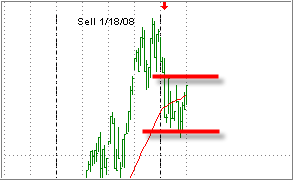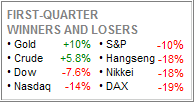 For the first time, Fed Chairman Bernanke acknowledged that a possible recession can’t be ruled out. Although he did not back off his viewpoint that there would be some sort of second half recovery, he seems to have come around to what the rest of us have been thinking.
For the first time, Fed Chairman Bernanke acknowledged that a possible recession can’t be ruled out. Although he did not back off his viewpoint that there would be some sort of second half recovery, he seems to have come around to what the rest of us have been thinking.
His view put a stop on any continuation of Tuesday’s rally, at least for the time being. He’ll be doing a 2-day testimony, and I would expect Wall Street to hang on and dissect his every word. Interesting to me were his comments regarding the Bear Stearns assist. He said that the damage caused by a failure would have rippled across the entire U.S. economy.
MSN Money reported his statements as follows:
When Bear Stearns told the Fed on March 13 that it was going to have to file for bankruptcy, Bernanke said, the Fed believed that the issues posed by the collapse of the investment bank were bigger than the company itself.
“Our financial system is extremely complex and interconnected,” Bernanke said, “And Bear Stearns participated extensively in a range of critical markets. With financial conditions fragile, the sudden failure of Bear Stearns likely would have led to a chaotic unwinding of positions in those markets and could have severely shaken confidence.”
That’s what I thought as well. The looming question in my mind is if this will be a continued pattern. What if the next Bear Stearns runs into the same problem? And then another one? Or may 2 firms at the same time?
To me it’s not a question of “if” but simply “when,” because I fail to see how banks, having leveraged investments in illiquid or downright garbage assets, can get rid of them. Since all big players are involved in pretty much the same scheme and locked into each other via complex derivatives, which one will be the white knight?
I don’t have any answers to these questions, but I think about them. They affect me only in that my investment stance and approach remain conservative, and I need to see a clear resumption in trend before I make any commitments to the domestic or international market. Right now, our Trend Tracking Indexes are still neutral in those two areas, as I pointed out yesterday.
However, things can change in a hurry, and I am prepared to act if an opportunity presents itself.






